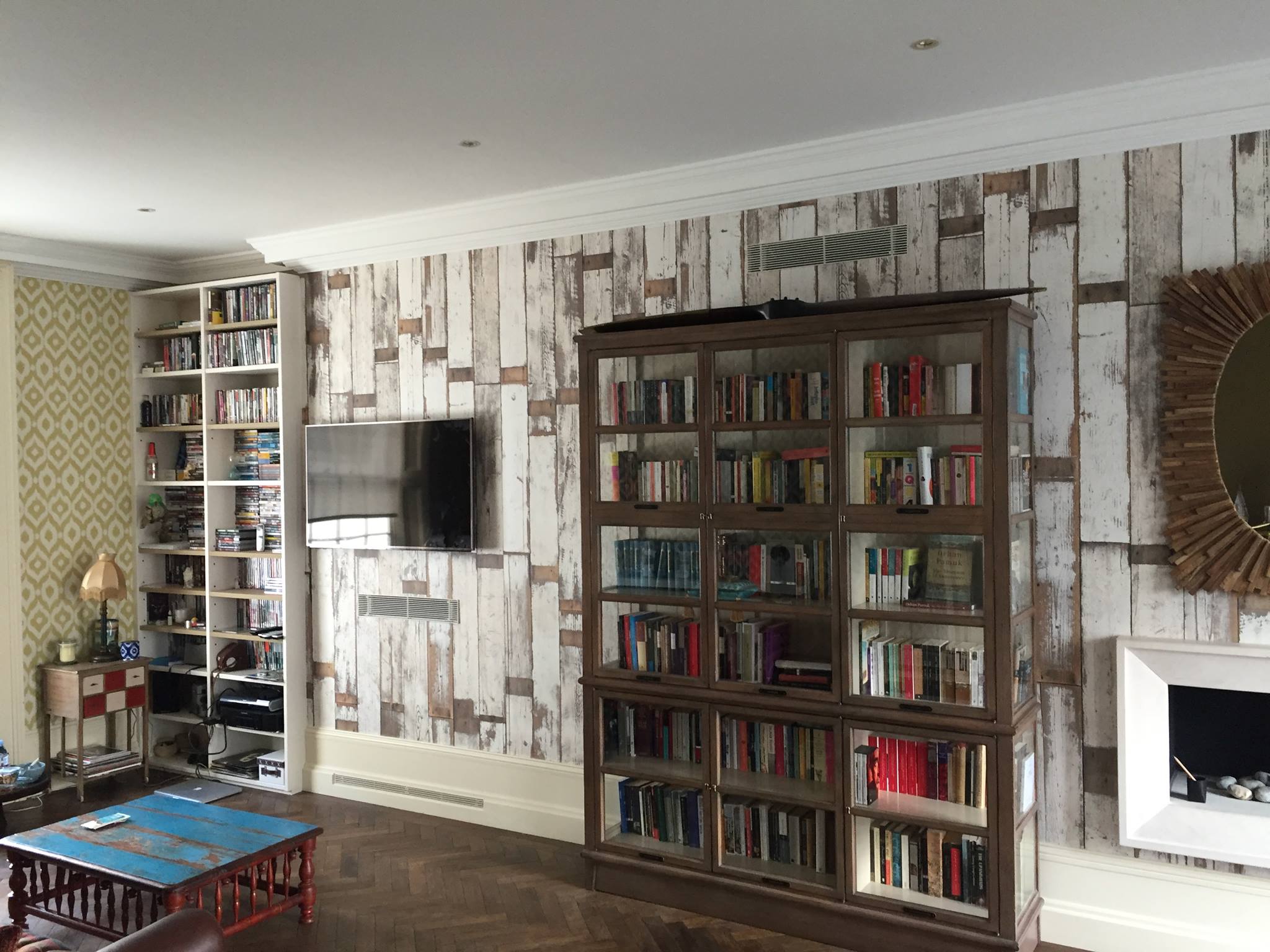When it comes to enhancing your home’s interior, the choice between wallpapering and painting can be a challenging one. Both options offer unique benefits and can significantly alter the ambience of a room. To help you navigate this decision, we will explore the fundamental aspects of each option, including their advantages, disadvantages, costs, and maintenance, while providing insights into the best applications for each.
Understanding the Basics
Before diving into the specifics of wallpapering and painting, it’s essential to understand what each entails.
What is Wallpapering?
Wallpapering involves applying decorative paper to walls, which can come in various patterns, textures, and finishes. This method has seen a resurgence in popularity due to its versatility and ability to create a striking visual impact.
What is Painting?
Painting the walls, on the other hand, involves applying a liquid pigment to walls using brushes or rollers. This method is often seen as a more straightforward approach, providing a wide range of colours and finishes to suit any aesthetic.
The Aesthetic Appeal
Wallpaper: A Touch of Elegance
One of the most significant advantages of wallpapering is its ability to add character and depth to a room. With countless designs available—from classic damasks to modern geometrics—wallpaper can serve as a stunning focal point.
- Patterns and Textures: Wallpaper can introduce intricate patterns and textures that paint simply cannot replicate. Textured wallpapers can also help to conceal wall imperfections, providing a smoother appearance overall.
Painting: The Power of Colour
While wallpaper can provide unique designs, painting offers a virtually limitless palette of colours. Homeowners can easily switch shades to refresh a room’s look without the commitment required for wallpaper.
- Customisation: With paint, you can create various effects, such as ombre or colour blocking, to achieve a personalised atmosphere.
Durability and Longevity
Wallpaper Durability
High-quality wallpaper can last significantly longer than paint, often up to 15 years with proper care. This longevity makes it a worthwhile investment, particularly in lower-traffic areas where wear and tear are minimal.
- Maintenance: Many modern wallpapers are washable, allowing for easy cleaning without the risk of damaging the material.
Paint Longevity
Paint typically requires reapplication every 3 to 5 years, especially in high-traffic areas. While some high-quality paints may last longer, the need for frequent touch-ups can be a drawback for busy households.
- Wear and Tear: Painted walls are susceptible to scratches and stains, particularly if a matte finish is used.
Cost Considerations
Wallpaper Costs
The initial expense of wallpapering can be higher than painting due to the cost of materials and professional installation.
- Installation Fees: Hiring a skilled wallpaper installer can add significantly to the overall cost, particularly for intricate designs or patterns that require precise matching.
Painting Costs
Painting is generally more budget-friendly, especially if you opt for a DIY approach. The cost of paint is typically lower than wallpaper, and with the right tools, many homeowners can achieve professional-looking results without hiring a professional.
- Material Costs: A gallon of paint can cover a substantial area, making it a cost-effective solution for larger spaces.
Ease of Application
Wallpaper Installation
Installing wallpaper can be a complex task, often requiring a professional touch. The process involves preparing the wall, measuring and cutting the wallpaper, and ensuring proper alignment.
- Skill Required: For those looking to achieve a flawless finish, hiring a professional is often recommended, particularly for traditional wallpaper types.
Painting Simplicity
Painting is often seen as a more straightforward task, making it an attractive option for DIY enthusiasts. Most homeowners can apply paint with relatively little experience, allowing for a quicker turnaround.
- Less Preparation: While wall preparation is still necessary, painting typically requires less intricate planning than wallpapering.
Maintenance and Care
Wallpaper Maintenance
Maintaining wallpaper can be easier in some respects, as many wallpapers are designed to be washable. This feature allows for easy cleaning of stains and marks.
- Longevity: With proper care, wallpaper can remain vibrant and intact for many years, reducing the need for frequent replacements.
Paint Maintenance
Painted walls require regular upkeep, including touch-ups and occasional repainting. The type of finish chosen can also impact maintenance; for instance, glossy finishes are easier to clean than matte ones.
- Touch-Up: Keeping a small supply of leftover paint can help address minor scratches and blemishes as they occur.
Environmental Considerations
Wallpaper Environmental Impact
Some wallpapers can contain harmful chemicals, such as volatile organic compounds (VOCs), which can negatively impact indoor air quality. However, eco-friendly options are available, including those made from sustainable materials.
Painting Environmental Impact
Similarly, many paints contain VOCs, but there are low-VOC and zero-VOC options on the market. Choosing these eco-friendly products can help reduce harmful emissions while still achieving a beautiful finish.
Resale Value
Wallpaper and Home Value
While wallpaper can add a unique touch to a home, it may not appeal to all potential buyers. Personal preferences for wallpaper styles can vary widely, which could impact resale value.
- Market Trends: In some markets, homes with wallpaper may be seen as dated, while in others, they may be viewed as stylish and sophisticated.
Paint and Home Value
Paint is generally considered a safer option for resale value. Most buyers prefer neutral, freshly painted walls, as they can easily envision their style within the space.
- Broad Appeal: A well-executed paint job can enhance the overall appeal of a home, making it more attractive to a wider range of buyers.
The Best Applications for Each Option
When to Choose Wallpaper
- Formal Spaces: Wallpaper is an excellent choice for formal dining rooms or living areas where a touch of elegance is desired.
- Low-Traffic Areas: Bedrooms or guest rooms are ideal spaces for wallpaper, as they typically experience less wear and tear.
When to Choose Paint
- High-Traffic Areas: Hallways, kitchens, and children’s rooms benefit from the durability and ease of maintenance that paint provides.
- Frequent Updates: If you enjoy changing your décor regularly, paint allows for easy updates without the hassle of removing wallpaper.
Conclusion
Ultimately, the decision between wallpapering and painting comes down to personal preference, lifestyle, and the specific requirements of your space. Both options have their merits, and understanding the nuances of each can help you make an informed choice that enhances your home’s aesthetic appeal. Whether you opt for the timeless elegance of wallpaper or the versatile charm of paint, both can transform your living environment into a beautiful and inviting space.
If you’re living in London and you need reliable painting, decorating and wallpapering service, I would like to invite you to TM Decorating from North London.





